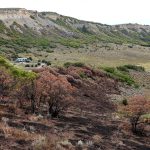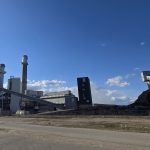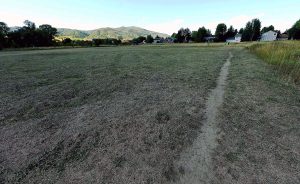Big Pivots: Can these coal-fired units be relied upon for power?
Big Pivots
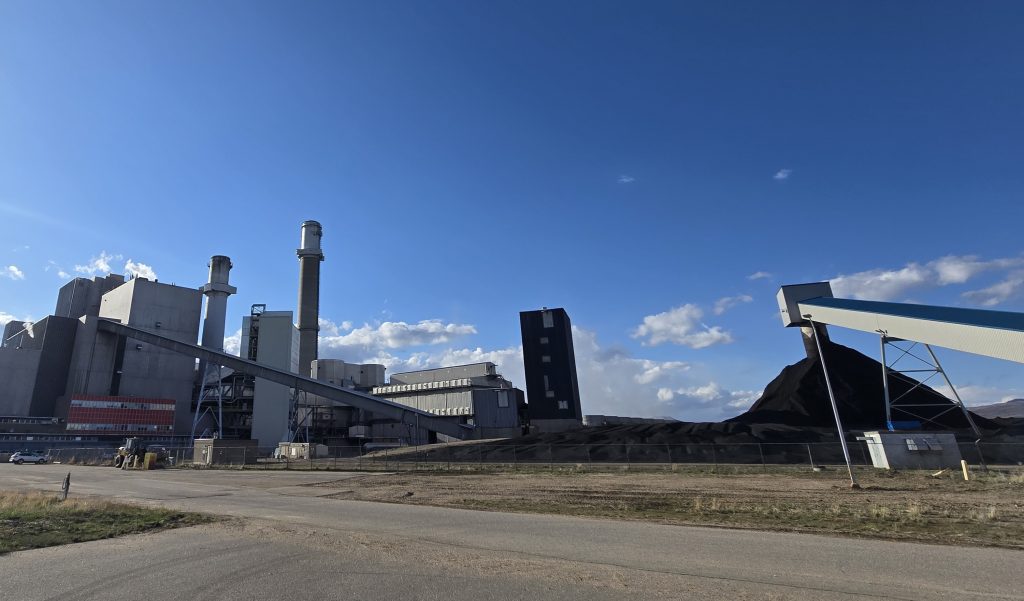
Suzie Romig/Steamboat Pilot & Today
Again and again, the argument is made: We need coal-fired power plants to provide baseload generation because you just can’t trust renewables. They’re intermittent. Renewables require too much backup energy, making them very expensive.
U.S. Rep. Jeff Hurd, who represents Colorado’s sprawling Third Congressional District, which includes Pueblo, worked that argument in a Sept. 3 congressional hearing in Washington D.C.
“In my Colorado district, the city of Pueblo has a fully functional coal-fired unit that faces early retirement because, in my view, of short-sighted government policy. This raises serious concerns about reliability, affordability, and also the ability to meet growing demand,” said Hurd in the House Natural Resources Committee hearing.
Pueblo has two coal-burning units. Comanche 2 is scheduled for retirement by the end of 2025. Comanche 3 is scheduled to operate at successively lower capacities before full retirement at the end of 2030.
The witness, Adam Suess, a deputy assistant secretary in the Department of Interior, replied that “the last thing that we can afford to do is to shut down ongoing, sustainable base-load affordable power for communities like yours.”
Can intermittent resources like wind and solar can meet the load demands required by AI and other data centers?
No, Suess replied, because wind and solar are intermittent.
Hurd’s brief questions at the Congressional hearing fit in with a broad argument updated from a decade ago. Then, it was “coal keeps the lights on.” Now, it’s “coal will keep the data centers humming.”
Several days before Hurd’s questions in Washington D.C., Pueblo County hadserved notice that it was seeking federal intervention to keep Comanche 2 operating beyond 2025. The county also asked that the federal government order Xcel Energy, the operator and majority owner of Comanche 3, to operate it at higher levels.
Pueblo County’s justification for federal intervention was the need for “reliability” as well as the economic impact of lost jobs to Pueblo. It premised these demands on replacement generation in Pueblo. Xcel Energy in September asked for bidders to submit proposals. Projects in Pueblo County will get an edge in preference, other things being equal.
The broader backdrop is the assertion by President Donald Trump of authority under the Federal Power Act to use emergency powers to keep fossil fuel plants operating to protect grid reliability. A 1,450-megawatt coal plant in Michigan operates under the premise that it is needed to ensure grid reliability in a 15-state region. Michigan hotly disputes the premise.
In late September, Energy Secretary Chris Wright confirmed that the Trump administration is “absolutely” exploring ways to keep older generating units alive. One option is using the 202(c) clause of the Federal Power Act, as was used for the Michigan coal plant.
E&E News by Politico reported in a Sept. 25 story that the Trump administration is also considering using the Defense Product Act to keep uneconomical coal power plants operating. Another is to rely on a July Department of Energy report that assessed reserve margins across the nation’s regional grids. The integrity of that report has been challenged, according to Canary Media.
The environmental community in Colorado has been chattering for over a month with speculation that the federal government will use the 202(c) power under that 1935 law to keep units at Craig and Pueblo operating.
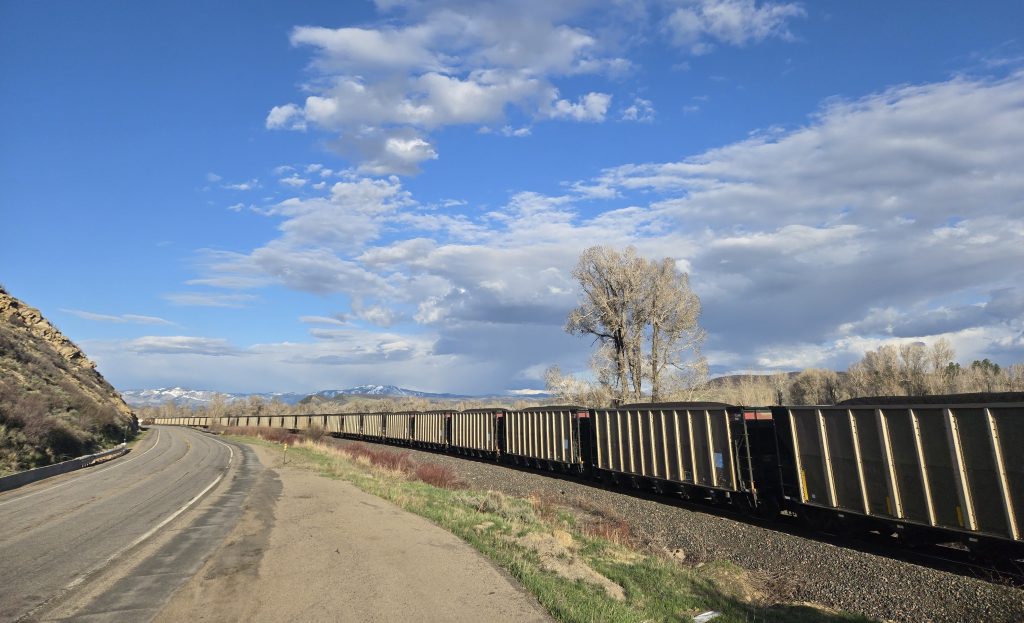
Lots of unplanned outages
Renewable energy can be intermittent. So can fossil fuel plants. That is particularly true of Comanche 3.
Reports filed by Xcel Energy, the operator and primary owner of the 750-megawatt unit, tell a story of frequent and unplanned shutdowns because of equipment malfunctions. This is in addition to scheduled shutdowns for maintenance.
The unit, Colorado’s youngest, was shut down unexpectedly for parts or all of 138 days for the two years beginning in early August 2023.
This was in addition to at least one planned outage in 2024 that lasted 78 days. At least twice the generation was less than what had been scheduled because of mechanical or other problems.
A settlement agreement at the Colorado Public Utilities Commission in 2023 requires Xcel to report unplanned outages at Comanche 3. Big Pivots obtained those reports in response to a Colorado Open Records Act request. Xcel also reports outages to the Department of Energy.
Comanche 3 uses supercritical coal-burning technology, which can achieve 44% efficiency and hence reduced emissions as compared to the 33% efficiency for conventional coal-burning units, according to Energy Education.
This unit, Colorado’s largest coal plant, has had problems from the beginning. It was supposed to open in 2009 but leaking steam valves forced delays until July 2010. Troubles continued. The coal-burning unit was offline an average of more than 91 days annually during its first decade, only 27% of them planned, according to a report compiled by the PUC staff.
Comanche 3 was down for nearly all of 2020, continuing into 2021. In early 2022 came another unplanned outage, this one lasting for several months.
A PUC report in 2021 said that the frequent outages had pushed energy costs 45% higher than originally projected.
CORE, the Sedalia-based cooperative that owns 25% of Comanche 3, sued Xcel, saying that the outages in 2020 and 2021 had cost the cooperative $253 million. A jury in Denver awarded CORE $26.45 million.
This year, outages have continued. It was down for parts or all of 14 days in March. In July came rising demand because of heat. Comanche sat out all but about five days of the month.
But wait — there’s more. The plant went down unexpectedly again on Aug. 12. The report filed by Xcel with the PUC on Sept. 10 said that further details will be shared when they become available. It’s not clear that Comanche 3 has resumed operations.
This coal-burning unit has been a real lemon.
Comanche 2, a smaller unit first put into service in 1975, has been far more reliable but also had unplanned outages. Xcel describes these as generally of limited duration. The outages have been caused by the unit’s age and its near-retirement status. This caused crews to take the plant offline to safely make repairs.
“This is part of an effort to preserve the unit’s reliability while minimizing maintenance costs before its decommission date,” explained Tyler Bryant, a media relations representative.
How reliable is coal?
Resource adequacy — a measure of grid reliability, as defined by the National Renewable Energy Laboratory — has been a constant concern in this shift from electrical generation from combustion of fossil fuels to increasing penetration by renewables.
After about 20 years of modest growth, electrical demand has started to accelerate. Data centers will account for more than half of all new demand in the United States, according to the International Energy Agency.
Data centers are the new best friend of coal and natural gas, proclaimed Utility Dive in July. Northern Virginia, which has 300 data centers, has been called the data center of the world. Dominion Energy has cited the demand growth as the reason it wanted to retain coal capacity that had been scheduled for retirement. And there, as elsewhere in the country, including Colorado, utilities want to add natural gas generation.
Colorado is bracing for a possible explosion in electrical demand from data centers. Xcel Energy in its 2024 submission to the Colorado Public Utilities Commission cited expansive demand from data centers in asking permission to add giant new outlays of renewable generation and batteries buttressed by natural gas. It said that data centers would represent 72% of the growth in peak demand. The PUC commissioners were skeptical but have agreed verbally to a somewhat lesser expansion.
RMI, the think tank based in Boulder, issued a report on Aug. 12 that declared that coal-fired power plants are far from being a reliable backbone for this new era of electricity demand. They are a “brittle, outmoded technology that threatens to undermine the very grid resilience they’re being proposed to protect,” RMI researchers Gabriella Tosado, Ashtin Massie, and Joe Daniel said in a blog.
The RMI report cited work by the Energy Systems Integration Group, which found coal-burning units can contribute power to meet peak demands 83% of the time.
Even in the best of circumstances, said RMI, coal units lack the flexibility needed for the large, fast-changing loads like data centers. “They ramp slowly, respond poorly to sudden load shifts, and are difficult to turn on or off quickly. They can take 12 or more hours to come on line,” said RMI.
RMI also noted that aging coal plants have been unable to consistently deliver under stress, as has been demonstrated by failures during cold snaps, heat waves, and storms.
During Winter Storm Uri in February 2021, when much of Texas lost power primarily because of failures by the state’s natural gas infrastructure, other forms of generation — including coal plants — also went offline due to the cold temperatures.
Other reports have cited similar figures. In 2019, examining the same question in a post titled “The Myth of the 24/7/365 Power Plant,” Rachel Fakhry, then of the Natural Resources Defense Council, reported that the average coal plant was unable to supply power about 15% of the time, while the average nuclear plant was unavailable 9% of the time and gas plants 5%.
In June, USA Today cited similar figures, this time from a January 2025 report by National Renewable Energy Laboratory: full and partial outages caused U.S. coal plants to be offline 12% of the time because of maintenance or unexpected failures.
An orange alert in August
Colorado had hot weather during three days in early August. Temperatures reached 99 degrees in Denver, Xcel’s largest market, on Aug. 7. The average temperature across the 24-hour span was 87 degrees.
Xcel responded with an “orange alert” to its 1.6 million customers in Colorado. A yellow warning indicates a remote possibility of power outages. An orange warning announces greater concern.
Orange alerts are “rare, but not unheard of,” Erin O’Neill, a PUC staff member, told the PUC commissioners at their weekly meeting on Sept. 24. Xcel has issued two orange alerts in 2025. Some years, none have occurred. The last before that were in 2021, when there were three.
In issuing an orange alert, Xcel asks customers to cut use of electricity. Through the years, several demand-management programs have been deployed. These programs provide customers incentives. They proved very effective on that hot August day beginning at 3 p.m., O’Neill told the commissioners. Critical was the time slot of 5 p.m. to 7 p.m.
“Demand-response programs really did seem to show up in a substantial way and helped alleviate the stress on the system,” O’Neill said.
Yellow or orange alerts are “pretty much never the result of one thing going wrong,” she said. She identified several reasons:
First, Xcel had 11 fossil fuel units that had some amount of unplanned outrage during the three days of high temperatures. Of those fossil units, 80% of the unplanned outages occurred among coal units.
O’Neill also said Xcel lacks what it wants to have in planning reserves, the cushion for when things go wrong. Too, generation by renewables was lower than would be expected for a day in early August. Not a lot, she said, but enough to be a factor. And finally, Xcel has reduced investment in maintenance as it prepares to retire its coal units.
What the commissioners said
Questions by the three PUC commissioners indicated interest in the exact mechanics of how the various components of the evolving power sector relate. For example, Eric Blank, the chairman, asked how Xcel discharged its lithium-ion batteries in this situation. Were there specific lessons about demand-management that should be carried into other proceedings?
But the biggest takeaway of at least two of the commissioners was that fossil fuels, especially coal, had been unreliable. “A real lack of reliability, especially those coal resources, when we needed them the most,” said Commissioner Megan Gilman.
Commissioner Tom Plant took it a step further. As a state, he said. Colorado is trying to move away from “some of these unreliable or less reliable and more expensive resources and toward expanding the capabilities of the more reliable and more flexible, whether it’s demand management stuff or energy storage.”
People, he added, have been saying that coal will provide more reliability and lower costs.
“But what we’re seeing here is exactly the opposite. It’s what is less reliable. It’s more expensive.”
This, he concluded “is a real endorsement of the path we’re taking.”
In Pueblo County, there is strong dissent to this pathway. Hurd, Pueblo’s representative in Congress, echoed the argument of the Trump administration. The facts, though, tell a different story.
- “Will Trump try to keep coal burning in Pueblo?” Big Pivots, Sept. 3, 2025
- “Pueblo County refuses to repudiate plea to Trump” Big Pivots, Sept. 5, 2025
- “Xcel saves 7 months and PUC chair’s response to Pueblo” Big Pivots, Sept. 15, 2025


Support Local Journalism

Support Local Journalism
Readers around Steamboat and Routt County make the Steamboat Pilot & Today’s work possible. Your financial contribution supports our efforts to deliver quality, locally relevant journalism.
Now more than ever, your support is critical to help us keep our community informed about the evolving coronavirus pandemic and the impact it is having locally. Every contribution, however large or small, will make a difference.
Each donation will be used exclusively for the development and creation of increased news coverage.

